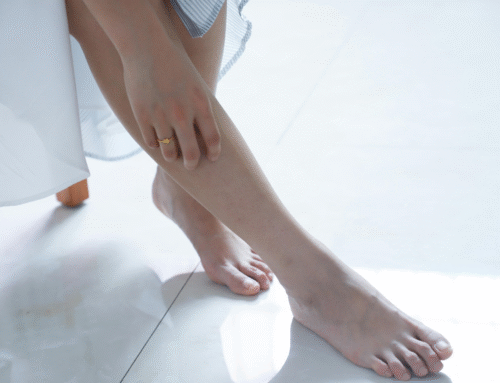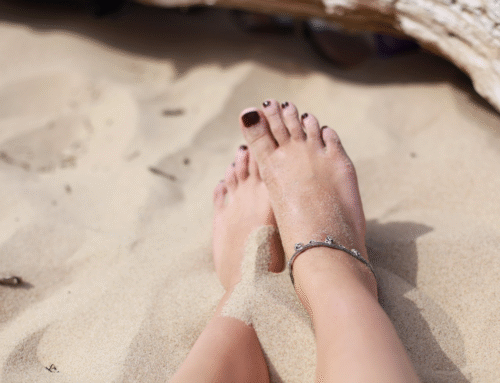How did I catch fingernail fungus? When we think of and address nail fungus, the default seems to be toenail fungus since that is far more common than fingernail fungus. That is probably why fingernail fungus remains ignored, to the extent that many people do not know how to protect themselves from fingernail fungus. In this blog post, we can help you out with that by pointing out the ways in which you can catch fingernail fungus.
Fingernail and toenail fungus infection is more common than you might think. Toenail and fingernail fungus is widely prevalent, affecting adults of all ages, and sometimes children. Toenail fungus is the more common.
For most people, nail fungus on the fingers is actually even worse than toenail fungus because it’s much harder to cover up hands than feet. People wear shoes regularly, but they don’t generally want to wear gloves every day of their lives. If they do, people will no doubt question why they are wearing gloves. If they don’t, people will ask them what is wrong with their fingers. There is really no way to avoid embarrassing questions if you have nail fungus.
This is why you should get treated before the nail fungus spreads. As you might know, there are lots of different nail fungus treatments on the market, some of which are more effective than others. If you need help deciding which nail fungus treatment is the right one for you, you should consult with a doctor who has experience treating nail fungus. Of course, the sooner you get the treatment started, the sooner you will be rid of your nail fungus and the sooner you will be able to walk around with healthy-looking hands.
Fingernail Fungus
The first way in which you can catch fingernail fungus is from your own feet. The most common way for people to get fingernail fungus is when they get toenail fungus, which then spreads to the skin and the fingernails, amongst other parts of the body. So, to avoid catching fingernail fungus in this way, you should take the normal cautionary steps of preventing toenail fungus – wearing shoes in public places, washing your feet often and keeping them dry, and wearing clean and dry socks and shoes. If you already have toenail fungus, you should seek early treatment to prevent it from spreading to your fingernails.
Fingernails with Fungus
Fungus on the fingernails is less common than on the toes. This is because the fingers are usually kept drier than the toes. This happens without most people trying, as the sweat from the feet tends to moisten the environment around the toenails. Additionally, toenail fungus tends to go unnoticed for a longer period of time since the toenails are less visible than the fingernails. Because of this, fingernail fungus is more likely to be treated before it is spread to others through methods such as shaking hands.
While fingernail fungus is less common, it can often be more worrying than toenail fungus for purely aesthetic reasons. The fingernails are much more visible than toenails, and fingernail fungus is much more difficult to obscure. Because of this, fungus on the fingernails can be more stressful than toenail fungus. An upside to this is that because the nails of the finger are more visible, it is easier to recognize fingernail fungus while it is new. This is good because if you receive effective treatment for the fungus while it is in its beginning stages, you can eliminate the condition before it starts to look very obvious.
Nail Fungus
Having reduced blood circulation or diabetes increases the risk of being infected with fungus.
- Wearing artificial nails for long periods of time, or getting nails done at salons that don’t clean their instruments frequently, would also increase the risk of developing nail fungus.
- Wearing closed-toed shoes for long hours or wearing the same socks repeatedly would also increase the risk of the infection.
The fungus is microscopic. As a result, you can’t see it with the naked eye. Unless it overgrows. As a result, bacteria, mold, or common fungal types caused this infection in the nails.
- Microscopic organisms might enter the body through a skin injury
- Fungus thrives in a warm and wet environment
- Individuals who spend the majority of their time in a moist environment where their hands and feet are in the water are more likely to get infected
What do infected nails look like?
Symptoms of toenail or fingernail fungal infection include:
- Broken, thick nails
- Discoloration of the nails
- Accumulation of debris under the nail
- The nails lifted and separated from the nailbed
As a result, when these symptoms are noticed, have the doctor examine the nails.
Fingernail Fungus and the Immune System
It is a common misconception that fingernail fungus results from poor hygiene. However, this is a myth. A fingernail infection cannot happen solely from a lack of hygiene. And once the infection occurs, washing the nails cannot cure it. Soap has little effect on fungus. Fingernail Fungus and the Immune System have a lot to do with each other.
And instead, in order to get rid of the fungus, you need to focus on your immune system. People with strong immune systems are more likely to fight off fungal infections. Even if a person is exposed to fungus, the immune system is able to eliminate the fungal organisms before they cause an infection. People who have other illnesses or poor health have an increased chance of contracting nail fungus.
Eating healthy and taking supplements to boost your immune system is a great strategy for preventing nail fungus. If a person does get fingernail fungus, there are several options for treatment. There are several home remedies that are available for people to try. Such remedies are soaking your nails in white vinegar.
The majority of topical treatments are of low effectiveness because it is treating the external nail, when the fungus could be only under the nail bed, and consequently, are impenetrable with these treatments.
What to avoid to not get fingernail fungus
Similar to how toenail fungus spreads in places where your feet come into contact with fungal spores deposited by others, the same holds true for fingernail fungus. You can catch fingernail fungus where you are touching things that are touched by many other people; examples include computer keyboards at offices, libraries, or computer cafes, or even elevator buttons. Washing your hands with soap frequently helps to prevent not only this but also the spread of many other harmful germs. Another extremely common place where many people get fingernail fungus is at nail salons, which reuse nail tools and nail polish on hundreds of clients without properly sterilizing them.

Treatment Options
Some treatment options for nail fungus are topical solutions and oral medication. Topical solutions are not an effective treatment option because the cure rate is very low, typically between 5 and 10 percent. It takes a very long time to see any results. This is because the topical solution does not penetrate all the way through to kill all the fungus present under the nail bed. Oral medication is a bit more effective, but it can be dangerous. Oral medication can lead to liver toxicity.
Laser Treatment
If you observe signs of fingernail fungus, it can worsen quickly, spread to others, or spread to your toenails if it has not yet.
If you have caught nail fungus, it can be easily treated using the FDA-approved PinPointe laser, which typically only takes one treatment.
Our nail doctors recommend this treatment. The PinPointe Laser treatment has the highest cure rate in the market. It has no side effects and no recovery period. As a result, you can go about your daily activities right after the treatment. Also, it is not painful.
This is why it is just as important to treat your fingernails early. If you have any of these signs of fingernail fungus, call us at (800) 672-0625 or visit our website for more information on our doctors at one of our over 160 locations.




